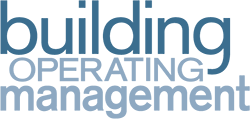
January Editorial PreviewHVAC: When facility executives are planning an HVAC system, they have two key priorities: occupant comfort and energy efficiency. Both are critical to any HVAC project, whether new construction, renovation, or retrofit. But achieving both of those goals is a challenge. And that challenge is complicated by the fact that the performance of the HVAC system is closely tied to the overall building design. So the question that facility executives have to face is how they ensure that the HVAC system is customized for the needs of their specific building. That issue is more pressing than ever today, because issues like climate change and occupant experience have raised the stakes for HVAC systems. This article examines best practices for sustainable design to ensure that the HVAC system is tailored to the needs of the building and the organization. Topics include:
ENERGY EFFICIENCY (COVER STORY): Energy efficiency strategies can produce significant bottom line savings for organizations of all types. And many of the underlying principles of energy efficiency can be applied to facilities of all types. This article reports on lessons learned from a leader in improving the energy performance of buildings, Bob Holesko, corporate director of engineering for Great Wolf Resorts. He has won Energy Star Partner of the Year and Sustained Excellence awards for his work reducing energy consumption. He has a playbook for energy efficiency that has produced significant gains in multiple organizations. The article draws from his extensive experience with energy-saving projects to identify best practices that all facility executives can apply to their facilities. Topics include:
DISASTER PLANNING/RESILIENCE: Facilities today face a range of new risks that have made resilience a key priority for many organizations. The need for resilience has already reshaped building owners' thinking about planning and design. For example, the threat of mass casualty attacks is one reason an increasing number of facilities have adopted sophisticated platforms, surveillance tools, and emergency communications systems, while the threat of car and truck bombs led to the focus on standoff distance in design as a way to make buildings more resilient. Today, a new set of disruptive threats is emerging. We report on a range of disruptive security threats to buildings that building owners need to be aware of and begin planning for. Topics include:
SMART BUILDINGS 2020: New Decade, New Opportunities. Rapid gains in technology have given building owners a wealth of options for making their buildings smarter. But the proliferation of choices poses a challenge for building owners: With so many alternatives available for consideration, which are the best for a given building? This article takes a careful look at the reality of smart buildings today, reporting on key opportunities and on decisions being made by leading organizations. Topics include:
ROOFING: Facility executives know that spring and fall roof inspections are critical to maintaining a healthy roof and ensuring a long life. But what about between inspections? Especially in the increasingly brutal winter months, are there steps facility executives can take to ensure there are no surprises when the spring inspection rolls around? This article offers advice on steps they can take during the winter to protect their roofs from the snow, ice, and wind of winter. Topics to include:
INTERIORS-DESIGN FOR PRODUCTIVITY: More and more studies are showing that Gen Z and Millennials are much more accepting of open office plans than their older colleagues. But that doesn't mean facility executives can just plop down an open office plan and call it a day. There is a distinct difference between a good open office plan that is flexible and fosters productivity, and a bad open office plan that is noisy and distracting and causes employees to work from home rather than submit themselves to the annoyance of the bad design. This feature gives tips and tricks on how to improve open office environments to work for all occupants. Topics include:
INNOVATIVE PRODUCTS: Plumbing/Restroom Design Contact me today to reserve your space in this issue! Brian Terry Facilities Print & Digital Publisher 414-228-7701, ext. 529 brian.terry@tradepressmedia.com |